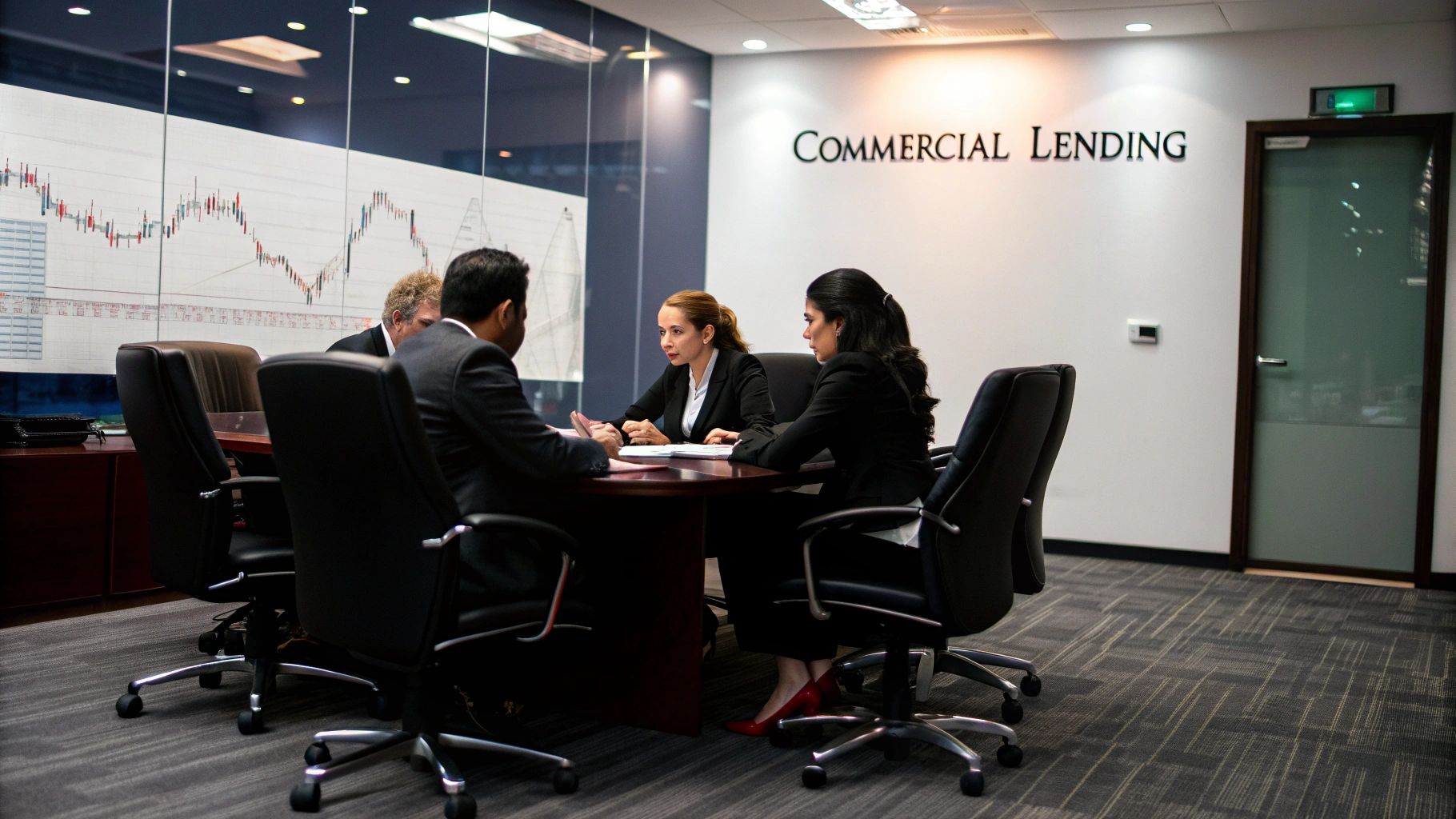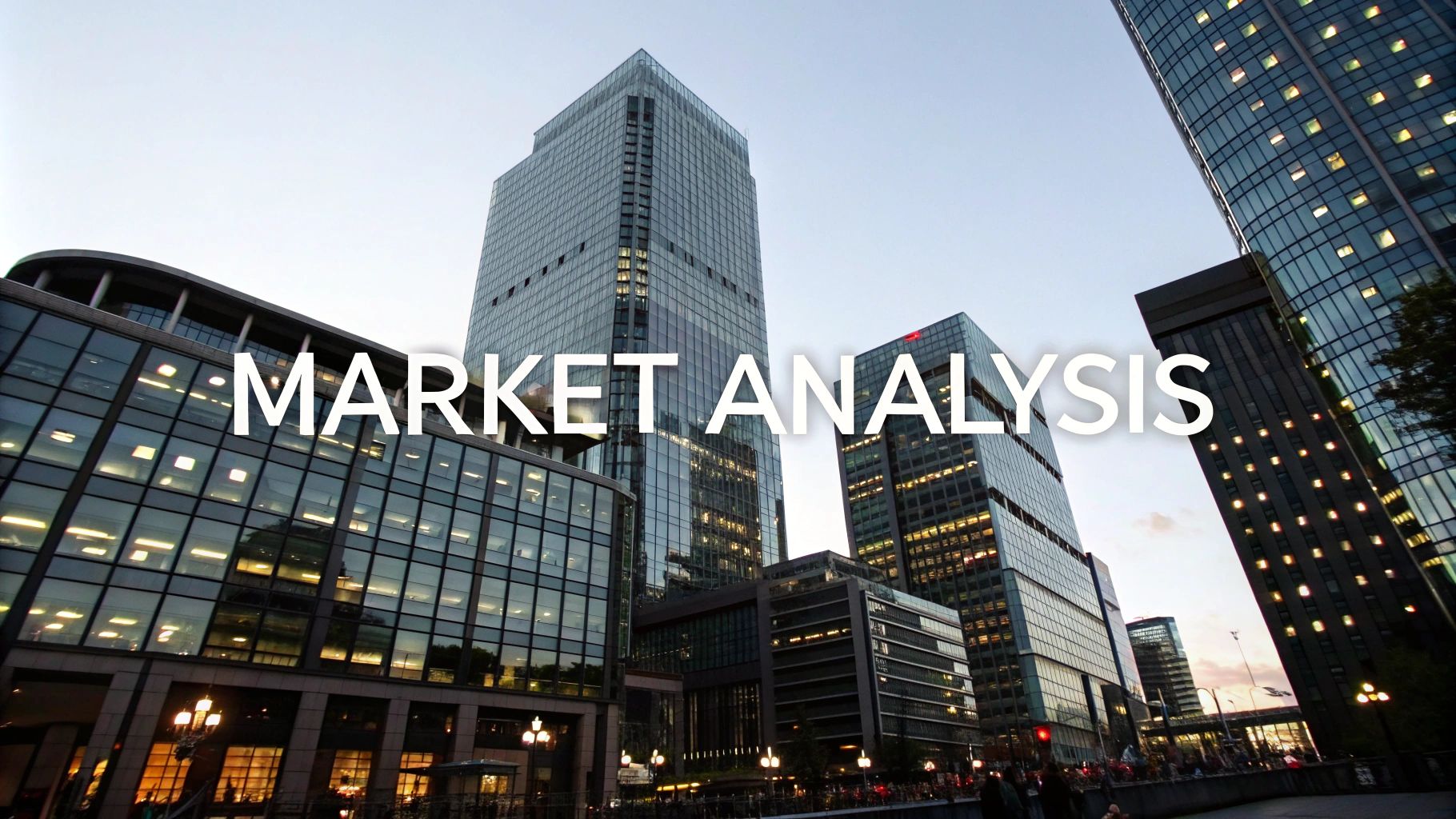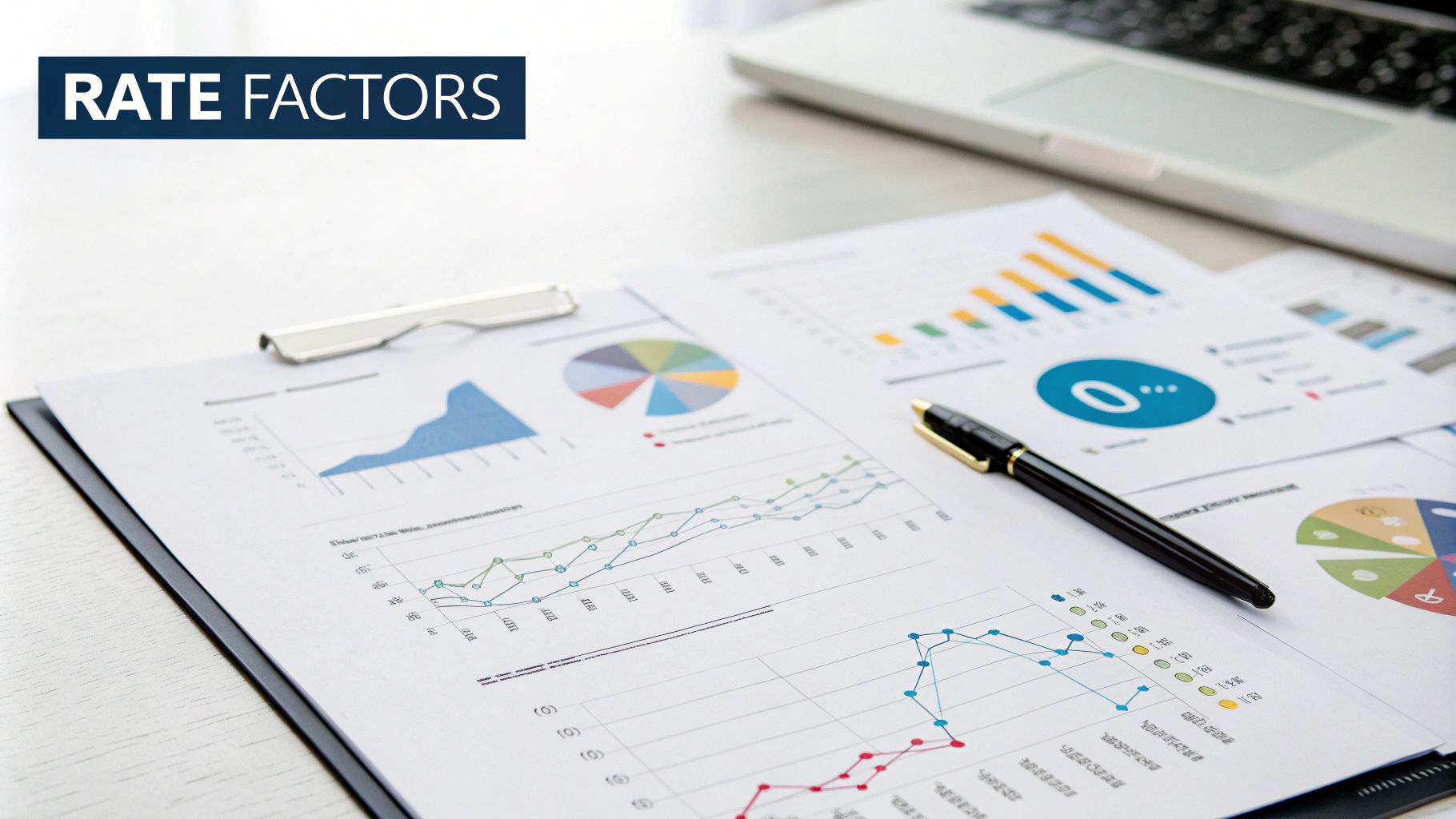Understanding Commercial Mortgage Rates

Commercial mortgage rates are a critical factor for businesses investing in property. Understanding these rates and their components is essential for smart decision-making. This means going beyond simply knowing the current rates and delving into the various factors that influence them. Let's explore the intricacies of commercial mortgage lending rates.
How Treasury Rates Influence Commercial Mortgages
Commercial mortgage rates are often linked to broader economic indicators, especially treasury rates. Treasury rates represent the rate at which the government borrows money, serving as a baseline for other lending. For instance, as of November 2024, the 5-year Treasury rate stood at 4.134%, while the 10-year rate was 4.406%. These rates significantly influence the rates lenders offer on commercial mortgages, using them as a benchmark for risk-free returns. As a result, when treasury rates increase, commercial mortgage rates often follow.
The Range of Commercial Mortgage Rates
Commercial mortgage rates are not uniform; they vary based on several factors, including the property type, the specific loan product, and the overall market conditions. For example, a multifamily loan might have a rate of 5.51%, while a commercial retail loan could be at 6.92%, even within the same market. Loan terms also play a role. A shorter-term loan, such as a 3-year fixed loan at 6.75%, may have a lower rate than a 10-year fixed loan at 6.92%. These rate differences reflect the varying risk levels associated with each property type and loan term.
CMBS: An Additional Factor
Commercial Mortgage-Backed Securities (CMBS) also influence commercial mortgage rates. CMBS are created by pooling commercial mortgages and selling them as securities to investors. These rates offer insight into market sentiment and investor interest in commercial real estate debt. As of November 2024, CMBS rates were around 6.50%. While potentially lower than some other commercial loan types, CMBS rates typically remain above residential mortgage rates due to the higher risks associated with commercial properties. Understanding CMBS rates adds a crucial dimension to the overall picture of commercial mortgage lending.
Loan Specifics and Their Impact
The specific details of each loan also significantly affect the offered commercial mortgage rates. The loan-to-value ratio (LTV), representing the percentage of the property's value being financed, is a key factor. A higher LTV generally leads to a higher interest rate, reflecting the increased risk for the lender. Another important factor is the debt service coverage ratio (DSCR), which measures a property's ability to generate sufficient income to cover its debt. A strong DSCR often results in a more favorable rate. Understanding these elements allows borrowers to navigate the complexities of commercial mortgage rates and make well-informed investment choices.
Current Market Trends

Navigating commercial mortgage lending requires a solid understanding of current market trends. These trends, like shifting currents, can significantly impact the available commercial mortgage lending rates. Staying informed about prevailing market conditions is therefore crucial for securing optimal financing.
The Current Landscape of Commercial Mortgage Lending Rates
As of late 2024, commercial mortgage lending rates remain fluid, responding to various economic forces. Fluctuations in treasury yields, for example, have a direct effect, with rising yields usually leading to higher borrowing costs. This close relationship between treasury rates and commercial mortgage rates makes monitoring economic indicators vital. Treasury rates can be seen as the bedrock of commercial mortgage rates – any instability in the former can impact the latter.
Key Market Drivers
Several other factors shape the current commercial mortgage lending rate environment. Investor demand for commercial real estate debt, as reflected in CMBS rates, influences lending conditions. The overall health of the commercial real estate market, including property values and vacancy rates, also plays a significant role. Strong market fundamentals often result in more attractive commercial mortgage lending rates. A healthy market with low vacancy rates, for example, can incentivize lenders to offer more competitive terms.
Property Type and Rate Differences
The type of commercial property being financed significantly affects rates. Multifamily properties, retail spaces, and office buildings all have unique risk profiles, leading to rate variations. For instance, multifamily loans might currently be around 5.51%, while retail loans could be closer to 6.92%. This underscores the importance of understanding the specific market segment when assessing rates. Just as different vehicles have different fuel efficiencies, different property types attract varying rates.
Looking Ahead: Forecasts and Considerations
Predicting the future of commercial mortgage lending rates is difficult, but understanding current trends provides valuable insights. Experts suggest that continuing economic uncertainty could cause further rate fluctuations. However, a robust commercial real estate market could offer stability. This interplay of factors highlights the importance of borrowers staying informed and adapting their strategies. Like a sailor adjusting to changing winds, borrowers need to adapt their approach based on the prevailing rates and market conditions. Staying informed and consulting with a knowledgeable broker like theHMOmortgagebroker can be invaluable in navigating these complexities and securing the best financing options.
Rate Comparison Tools
After examining market trends and influencing factors, the next step is comparing available commercial mortgage lending rates. This is where specialized tools and resources become essential. Effective rate comparison requires more than just looking at the interest rate; it involves understanding all associated fees and terms. Using the right tools can streamline this process.
Online Commercial Mortgage Calculators
Online calculators are powerful tools for comparing rates. These calculators allow you to input key loan details, such as the loan amount, term, and interest rate, to calculate estimated monthly payments and overall loan costs. This allows you to quickly assess the financial impact of different rates and loan structures. For example, you can compare a 10-year loan at 6.92% with a 5-year loan at 6.78% to determine the best option for your budget and long-term goals. Some calculators even incorporate additional fees, offering a complete overview of total loan cost.
Working with a Broker: theHMOmortgagebroker
Navigating commercial mortgage rates can be challenging, given the variety of loan products and lenders. Partnering with a specialized broker like theHMOmortgagebroker (https://www.thehmomortgagebroker.co.uk) can be extremely helpful. Brokers have access to a wider range of lenders and products and can use their expertise to help you secure the most favorable rates and terms. They can also explain the nuances of different loan structures, ensuring informed decisions that meet your specific needs. A broker acts like a personal shopper for commercial mortgages, saving you time and effort while potentially getting you a better deal.
Direct Lender Websites
Visiting individual lender websites is another valuable resource. Many lenders publish their current rates and loan terms online, providing transparency. However, it's important to remember that advertised rates are often starting rates and might not be the final rate you receive. This highlights the importance of combining this research with other methods like using online calculators and consulting with a broker. By using all available resources, you can gain a thorough understanding of the commercial mortgage landscape and make informed choices.
Factors Affecting Commercial Mortgage Lending Rates

Understanding the factors that affect commercial mortgage lending rates is crucial for sound investment decisions. Just as the price of a car depends on factors like make, model, and year, commercial mortgage rates are influenced by a complex interplay of elements. These factors can significantly impact your borrowing costs and project feasibility. Let's explore these key elements.
The Economy's Influence
The overall economic climate plays a major role in determining rates. This includes factors such as inflation, economic growth, and central bank policies. For instance, high inflation typically leads to increased rates as lenders seek to compensate for decreased purchasing power. During periods of economic uncertainty, rates may fluctuate considerably. Benchmark rates like treasury yields also directly influence lending rates, acting as a foundation for commercial mortgage rates.
Property Type and Risk Assessment
The type of property being financed significantly influences commercial mortgage rates. Different property types carry varying risk profiles. A multifamily property with consistent rental income might be viewed as less risky than a hotel, which experiences greater fluctuations in occupancy and revenue. This risk difference is reflected in the rates offered, with lower-risk properties potentially qualifying for lower rates. This is similar to car insurance – a sports car typically has higher premiums than a family sedan due to perceived risk.
Loan Terms and Structure's Impact
The specific terms of the loan, including the loan term, loan-to-value ratio (LTV), and amortization schedule, all affect the rate. A shorter-term loan might offer a lower rate but require higher principal payments, while a longer-term loan spreads the payments out but may have a slightly higher rate. A higher LTV usually results in a higher rate to offset the increased risk for the lender, much like a larger down payment on a car loan often leads to a lower interest rate.
Borrower's Financial Standing
The borrower's financial strength and creditworthiness are essential. Lenders evaluate credit scores, debt-to-income ratios, and overall financial stability. A strong credit history and healthy financial position can lead to more favorable rates. This is comparable to personal loans, where excellent credit scores secure better interest rates. A robust financial profile indicates a lower risk of default, encouraging lenders to offer more competitive terms.
Prevailing Market Dynamics
The state of the commercial real estate market and competition among lenders also influence rates. High demand and limited lending options can push rates up. Conversely, a less competitive market with ample lending can result in more favorable rates. This dynamic environment makes diligent research and consideration of current trends important for securing the best financing. Working with a specialized broker like theHMOmortgagebroker can provide valuable insights for navigating these complexities.
Application Process
After understanding commercial mortgage lending rates, market trends, and influencing factors, the next stage is navigating the application process. While potentially intricate, thorough preparation and a clear understanding of the steps involved can simplify this process. Think of it like assembling a complex piece of furniture – having the right tools and following the instructions carefully leads to a successful outcome.
Compiling Your Financial Documentation
The first step involves gathering all necessary financial documents. Lenders require a comprehensive overview of your financial health and the project's financial viability. This includes tax returns, income statements, balance sheets, and other financial records. This detailed information allows lenders to assess your repayment ability. Strong financial statements and a good credit score demonstrate creditworthiness and improve approval chances.
Property Due Diligence
Lenders conduct thorough due diligence on the property, which includes appraisals, environmental assessments, and title searches to verify value and identify potential risks. Factors like location, condition, and income potential are carefully reviewed. This is comparable to a doctor's physical exam – a comprehensive assessment is crucial for determining the overall health of the "patient," in this case, the property.
Selecting the Right Lender and Loan Product
Choosing the right lender and loan product is another critical step. Different lenders specialize in various property types and offer different loan products with varying terms and rates. Researching and comparing lenders is crucial for finding the best fit. For example, a lender specializing in multifamily properties might offer better terms for that property type than a lender focusing on retail spaces. Working with a broker like theHMOmortgagebroker (https://www.thehmomortgagebroker.co.uk) can streamline this, providing access to a wider range of lenders and expert guidance.
Submitting the Loan Application
Once documentation is gathered, due diligence is complete, and a lender is chosen, the next step is submitting the loan application. This typically involves a detailed application form and supporting documentation. This is your formal presentation to the lender, explaining why you deserve the loan and how you plan to repay it. Accuracy and completeness are essential for a smooth review. A well-prepared application can expedite the approval process. Similar to a well-crafted resume opening doors to job opportunities, a thorough loan application increases your chances of securing financing.
Underwriting and Loan Approval
The lender's underwriting team reviews the application, analyzes financial data, and assesses the loan's risk. This evaluation determines whether the loan meets their criteria and your ability to manage the debt based on the proposed rates. Upon completion of underwriting, the lender issues a loan commitment outlining the terms and conditions, marking the successful securing of your commercial mortgage. Just as a scientific experiment undergoes rigorous testing, your loan application undergoes thorough scrutiny before final approval.
Tips for Securing Better Rates

Securing favorable commercial mortgage lending rates requires a proactive and strategic approach. It involves understanding the market and positioning yourself for the best terms, taking specific steps to demonstrate your creditworthiness and appeal to lenders. It's like negotiating the price of a car – you research, compare, and negotiate to get the best deal.
Enhancing Your Creditworthiness
Improving your creditworthiness is one of the most effective ways to secure better rates. Lenders view your credit score as a key indicator of repayment ability. Just as a higher credit score unlocks better rates on a car loan, a strong credit history in the commercial realm can significantly reduce borrowing costs. This includes paying bills on time, managing debt levels, and addressing any credit report issues. A higher credit score signals lower risk, allowing lenders to offer more competitive rates.
Strengthening Your Financial Profile
Lenders closely examine your financial statements. Demonstrating strong financial health is essential for securing favorable rates. This involves preparing detailed and accurate financial records, such as income statements, balance sheets, and cash flow projections. These documents provide a clear picture of your business's performance and ability to generate consistent income, reassuring lenders of your repayment capacity.
Lowering Your Loan-to-Value Ratio (LTV)
The loan-to-value ratio (LTV) significantly influences rates. A lower LTV usually means lower risk for the lender and a lower interest rate. A smaller loan amount relative to the property's value offers more protection for the lender in case of default, similar to a larger down payment on a house securing a lower mortgage rate. Increasing your down payment can be a powerful way to negotiate better rates.
Comparing Lenders and Shopping Around
Comparing rates from multiple lenders is essential. Different lenders have different criteria, leading to rate variations. It’s important to explore all options and use the competitive landscape to your advantage. Contact multiple banks, credit unions, and online lenders to gather quotes and compare terms. This empowers you to make informed decisions and choose the lender with the best rates. Working with a broker like theHMOmortgagebroker can simplify this process, providing access to a larger network of lenders and expert advice.
Partnering with theHMOmortgagebroker (https://www.thehmomortgagebroker.co.uk) can significantly simplify securing a commercial mortgage with competitive rates. Their expertise and access to various lenders can help you navigate the complexities of commercial mortgage lending and optimize your chances of getting the best possible financing. Contact them today to explore your options.
